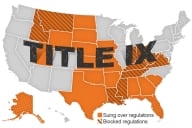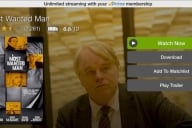You have /5 articles left.
Sign up for a free account or log in.
Two surveys released earlier this month add detail to the map of online education in the United States. The 2010 Sloan Consortium Report documents the continuing growth of online education and the impact of the current economic downturn on rising online enrollments. Concurrently, the 2010 WCET-Campus Computing Managing Online Education (MOE) survey provides important details about the instructional, operational, and technological terrain of online education. (Click here for the IHE reporting on the Sloan Consortium and Managing Online Education surveys.
Taken together, data from the Sloan Consortium and Managing Online Education surveys offer an interesting map of the evolving and expanding the landscape of online education:
- Enrollments are up. The Sloan surveys reveal that the number of students taking at least one online course grew from 1.6 million in fall 2002 to 5.58 million in fall 2009. Online headcount enrollment – individual students enrolled in one or more online courses – now account for almost a third – 29 percent – of the 19.34 million full-time and part-time students of all ages enrolled in public, private/non-profit, and for-profit degree-granting colleges and universities in the United States.
- Past enrollment gains are also prologue: Almost all (94 percent) of the fall 2010 MOE survey participants expect their institution’s online enrollment numbers to increase between 2011-1013; two-fifths (41 percent) anticipate enrollments to grow by 16 percent or more over the next three years (A/Y 2011-2013)
- Online education is moving from the periphery to the core. More than three-fifths (63 percent) of the Sloan survey participants agree that “online education is critical to the long-term strategy of my institution.” However, less than half the colleges and universities in Sloan survey have incorporated online education into the institution’s strategic plan.
- Many institutions are making money on online education, but others are uncertain if their programs are profitable. Almost half (44 percent) of the campuses participating in the MOE survey state that their online programs are profitable; more than a fifth (22 percent) report profits (defined as total revenues minus all expenses) were better than 15 percent for the past academic year (A/Y 2010). Yet an equal number of the MOE survey respondents (45 percent), typically the operating officer for their institution’s online programs, report that they do not know if their online programs were profitable this past academic year.
- Online students are taking “traditional” courses, but taking them online. The MOE survey reveals that three-fourths of the students enrolled in online course and programs are taking “traditional” degree-credit or certificate courses. More than four-fifths (84 percent) of the courses that campuses offer online are also available on-campus.
- Organizational structures are in transition. More than two-fifths (44 percent) of the MOE survey institutions report restructuring the organization of their institution’s online programs in the past two years while three-fifths (59 percent) expect to reorganize online ed in the next two years. Moreover, thirty percent that have organized in the past two years and also expect to restructure again in the next two years. The catalysts for restructuring cited by the MOE survey participants include budget issues (38 percent), a change in institutional leadership (35 percent), a change in program leadership (29 percent), and campus efforts to centralize the management of online education (27 percent).
- Internal issues and resources pose major barriers to program expansion. Although it is common to cite external factors such as national or program accreditation requirements, state regulation, or federal financial aid regulations as issues that impede program expansion, the MOE survey data clearly indicate that internal issues – budget cuts, lack of key human resources such instructors and support personnel, and faculty resistance to teaching online – pose a much greater challenge to institutional expand their online activities.
- Quality metrics are often informal while program assessment can be erratic and inconsistent. The participants in the MOE survey (the senior campus operating officer for online education programs) and the Sloan survey (provosts) generally report that their institution’s online programs are “as good” or “better” than the on-campus program. However the question that shadows this affirmative assessment about the quality of online programs is “How do they know?”
Some of the most interesting data from the MOE survey document mandatory training for faculty who teach online. Fully half (51 percent) of the campuses participating in the 2010 MOE Survey report that faculty who teach in online must complete a mandatory training program; the training averages 22 hours. This represents a significant investment of institutional resources and also a significant commitment of time from faculty who want to teach online.
The mandatory training data also reflect a dramatic difference in the institutional investment in faculty who teach online vs. on-campus. As my colleague, Ellen Wagner, the executive director of WCET, commented in the press release for the Managing Online Education survey, ““Mandatory training for faculty who teach online courses reflects an institutional awareness that the online environment is different. The all-too-common – and unfortunate – practice of hiring part-timers and handing them a syllabus, textbook, campus map, and parking pass will not suffice for faculty who teach online courses.”
Let’s applaud the investment that institutions make in providing training for faculty who teach online. And let’s applaud the commitment of online faculty who complete these training programs. Both the institution and the individual faculty are engaged in a commitment intended to improve the learning experience for online students.
And let us also recognize that the expanding individual and institutional experience with online education should suggest some new strategies and opportunities to enhance and improve on-campus instruction. As one example, institutions would probably do well to encourage (but not require) on-campus faculty to complete the training mandated for online faculty. The purpose of this training should not be to dictate the use of technology resources such as a learning management system, or to require that all courses have a technology component. Rather, the goal of training should be to help improve the quality and effectiveness of all courses, online and on-campus.
Your thoughts, esteemed reader? What does online education do well? What must it do better? And what lessons emerge from the online ed experience that could help to improve the effectiveness of on-campus courses?






